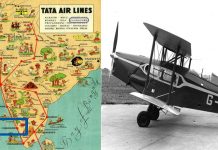20 Airplanes Too Ugly For The Sky
The wonder of flight is a thrill unlike any other. Once an exclusive venue reserved for the industriously wealthy and the privileged, modern flight has economized the operation to accommodate the average traveler. An estimated 8 million people fly each day, surpassing the 3 billion mark on an annual basis (44% of the world’s population). The machines that take us skyward have been evolving in leaps and bounds over the last century from rudimentary wood and cloth framework with open cockpits to supersonic rockets that scratch the bottom of the stratosphere 15 miles high.
And let’s face it, airplanes look really cool too! Sleek and slender aerodynamic design built to shoot through the sky at lightning speed, smooth as butter; to the average human they are complex machines filled with gadgetry of the likes they will never be able to comprehend. Indeed so, the modern airplane is filled with more technology than you can shake a stick at; sometimes, this complex engineering necessitates distinctive design features that are generally unpleasing to the eye, or just downright ugly! Although purpose built, we’re left looking at them with spite as they offend the congruency of what we perceive a well-designed airplane to look like. Despite their homely demeanor, many of these intentionally atrocious aircraft serve a very specific purpose and serve it exceptionally well. There are a few however, that are just as horrible as they look!
20 AIRBUS A300-600ST BELUGA XL
 Airbus, a self-proclaimed international pioneer in the aerospace industry, is living true to its claims and pushing boundaries in ways that should be downright offensive to the marine life community of mammals sharing the same namesake.
Airbus, a self-proclaimed international pioneer in the aerospace industry, is living true to its claims and pushing boundaries in ways that should be downright offensive to the marine life community of mammals sharing the same namesake.
Seemingly knowing their latest foray into production of an airframe that highly deviates from typical aeronautical design, they have officially adopted its nickname Beluga and boldly display it on the side of the massively tall fuselage.
Ugly or not, the design is very purpose-built for the transport of oversize cargo and assembled airframe parts for the aerospace industry. Heavy modifications to the empennage (tail section) as are also notable from the exterior at a glance.
19 MCDONNELL XF-85 GOBLIN

Many funny and ridiculous ideas have been noted throughout recorded history; although some have been complete failures, some have been the leading edge of innovation that pushes human advancement forward. The Goblin was designed to be released from the bomb bay of heavy bombers to complete missions where it would then re-dock for the return trip home. Docking in flight proved to be problematic due to the turbulent air surrounding the heavy bomber and after a series of mishaps, emergency landings and sub-standard performance of the Goblin compared to contemporary jet fighters of the time, the project was thankfully canceled.
18 BOEING 707-344C PHALCON

Developed from the Boeing 707, the Israel Aerospace Industries (IAI) EL/M-2075 Phalcon is a radar scanner developed to conduct penetrative surveillance to maintain air superiority. (I guess they didn’t have enough to put a down payment on a Blackbird.)
Rather than specially design a complete airframe from scratch, they opted for the stout Boeing 707 airframe as it was already tried and true.
The system also could be fitted to a variety of other Boeings such as the 767 and 747 series. It appears someone in the design department is amused with the irony of a plane with a ginormous nose being able to sniff out minute radar signatures.
17 FAIREY GANNET AEW.3

Originally designed to replace a submarine hunter from the WWII era, the Gannet was converted for Airborne Early Warning service (or AEW). Starting from what was supposed to be minor modifications actually snowballed into severe airframe redesign. The radar needed to be mounted very specific way, thus facilitating the relocation of the observers cabin, which subsequently meant relocation of the exhaust and by the time that was all done the vertical stabilizer in the rear had to be modified with more surface area to compensate for the instability caused by the radome. Not even the coolness of the contra-rotating props could distract you from the pile of ugly behind them.
16 HANDLEY PAGE VICTOR

Unsurprisingly, this unsightly abomination of the skies happens to share an acronym with the HPV virus; alas it could be considered the STD of the skies.
Sharing a few slight design features with the B-29 bomber (namely the front windscreen), it was developed to be a nuclear deterrent and has been in service since the late ‘50s.
Unfortunately, the design is just about as bad as it looks, and the plane was retired from its designed roll after stress cracks were found in the airframe. Apparently, the plane was not so suitable to the low altitude flying profile required to help avoid interception by enemy aircraft. The last Victor was retired in 1993.
15 ATL-98 CARVAIR

Derived from the Douglas C-54, the air ferry had a capacity of only a few dozen passengers and about five cars in a car-carrying configuration but it could also be configured for passengers only. The ATL-98 looks to be something like a cartoonish 747 with an overly-exaggerated flight deck contour and landing gear legs that look like they’d be as wobbly as a baby giraffe that just dropped out from the womb. Although it’s actually a fairly large aircraft at 41,000lbs and 30 feet tall by a 117 foot wingspan, the ridiculous fuselage along with the landing gear arrangement make it seem much smaller in pictures.
14 BRISTOL FREIGHTER

The Bristol Freighter was a large, post-war, tail-dragger typical of the design of the day. Conventional-type landing gear was the standard and only just started to share the air with tricycle gear airplanes.
The large, twin-engine freighter was designed with the transport of heavy, 3-ton military trucks in mind but was transitioned for passenger service.
The all-metal, high-wing monoplane was specifically designed for wartime utility, hence it’s lackluster looks. It’s not the only ugly wartime airplane, but some of the most beautiful aircraft were of this era thereby leaving the Bristol Freighter with no excuse for looking like it does.
13 PZL M-15 BELPHEGOR

When you want to see something taken out of proportion, look no further than the former USSR. The Polish-designed M-15 biplane has a unique claim to fame – it’s jet powered. It was developed for a Soviet agricultural plane that could handle very large farms and be very efficient.
Unfortunately, theory and practice are two different things and the plane was actually not efficient at all.
Less than 200 units of a proposed 3,000 were produced between ’76 and ’81 but it is the only jet powered agricultural plane, the world’s only jet-powered biplane, and the world’s slowest jet. Noteworthy as it may be, you have to try hard to be that bad.
12 BOEING X-32

Boeing is a legendary company that is known for creating some of the most iconic and memorable airframes known to man. Although that subject is highly, well, subjective, you can’t argue with more than a half-century of success in multiple markets. The agile company can produce quality airliners as well as superb military aircraft. Perhaps Boeing thought it had the new stealth fighter contract in the bag when it presented this marvel to compete with Lockheed’s X-35 (the prototype F-35 Lightning). The engine placement was far forward of the standard fighter’s rear CG-mounted engines and due to the need for thrust vectoring necessitated an obscenely large under-nose intake system that turned out to be even too ugly for the government to get behind.
11 281 PROTEUS

Ugly is as timeless as time itself; it knows no bounds. With a primary focus on safety, often times the visual appeal is left to chance whether it turns out to be a stunner or a something shameful when a plane is designed.The Northrop Grumman 281 features an extremely efficient design that can orbit for 18 hours at 63,000 feet. The pressurized Proteus facilitates crew comfort with a max cabin altitude of 15,500 at its service ceiling. That’s about the maximum a human being can safely operate in. With pressure lapse rates of the atmosphere, it is still an extreme pressure differential. A+ for utility; unsatisfactory for everything visual about the 281.
10 CASA C-212

This twin Aviocar is a medium STOL (short take off/landing) aircraft created in the early ‘70s for what could be considered a high performance role; no, we’re not talking about blistering speeds but rather, takeoff performance. The STOL designation is reserved for aircraft that have the ability to do just that – take off and land in a relatively short distance when airfield lengths and obstacles necessitate an aircraft with above average performance. The C-212’s great performance numbers and capacity for diversified utility make it a popular commuter, military transport and even a skydiver. Some examples of the C-212 that are so hideous it gives you the chills to look at.
9 VOUGHT V-173

War is and has always been a terrible thing; filled with destruction and loss BUT, if there was one good thing war does bring about, it’s the advancement of technology. International conflicts spur the gears of innovation into action and arms races produce new technology much more quickly than is produced in peacetime.
The V-173 is one such attempt to propel aerodynamic efficiency to the next level with a revolutionary design aimed at minimizing drag.
The super low aspect ratio of the all-wing design provided lift generation along the entire fuselage. Powered by twin 80hp Continentals, the flying pancake could climb at 800ft/min and sustain 138mph with its twin, 16 foot constant-speed propellers.
8 FAUVEL AV-36 GLIDER

The 1955, single-winged glider looks like something that provided inspiration to Star Wars and looks just as alien in the sky as Jabba the Hut would look at a track meet. Lacking a traditional empennage, the plane visually appears to suffer from lack of elevators. Despite the odd design and weird control surface setup, it is a highly aerobatic plane and is capable of doing some of the tightest loops you’ll likely ever see a glider perform. At a staggeringly low 474lbs gross, it doesn’t take much to get this feather aloft; don’t plan on looking good doing it though.
7 N9MB FLYING WING

If there’s one design that’s been a highly popular test bed for ideas that never really saw much commercial application, it’s the flying wing. Plenty of examples have been tried, even successfully, thorough history yet we don’t see many of them in existence.
One example of a home-run hitting flying wing is the B-2 Spirit, which is designed as not to be seen.
The Spirit owes a lot of its engineering and design to the data and testing results afforded by the N9MB that was ground-breaking in the mid ‘40s. Four, 1/3 scale prototypes were built for testing in anticipation of the proposed XB-35 to see how a large scale version could be expected to handle.
6 HELIOS PROTOTYPE

Not only is this thing ugly, it’s about as odd looking as it is cool. Yes, there is something oddly fascinating about the concave wing design that changes deflection in flight. It’s so slim and somehow elegant as it floats through the air as silent as a Prius. It was created to test the viability of solar-powered, high-altitude endurance aircraft designs and successfully reached an official world-record altitude for non-rocket powered aircraft of 96,863’! Part of that is due to the extreme efficiency of the wing design. The aircraft unfortunately was destroyed in flight due to structural failure at the hands of turbulence but has left a mark and set a high bar (literally) for aviation to aim for.
5 SOLAR IMPULSE

The Solar Impulse holds its parent company’s namesake and dares to venture off into the realm of clean-powered air travel. It’s a photovoltaic-powered solar aircraft designed to take off under its own power. It’s an endurance aircraft, like the Helios Prototype, but is a manned craft with a single seat for a pilot.
Originally designed to fly for 36 hours straight, it came within 10 hours of that target time in 2009.
In 2015, the Solar Impulse 2 (an updated version of the Solar Impulse) set out on a 16-month journey to circumnavigate the globe, silently crossing oceans and continents alike in a multi-stage journey to set a record for first circumnavigation of earth in a plane powered solely by solar energy.
4 TAYLOR AEROCAR

Some of these ugly designs have been pivotal for aviation’s advancement; some have been groundbreaking and essential to helping drive the spearhead of technology into our next horizon. Then there are those hair-brained ideas that are more of a novelty than a practicality. Indeed, the dream of a flying car in everyone’s driveway is just as noble as Henry Ford’s dream of a motorcar in every driveway, yet highly less feasible. Although flyable and certified, production ceased after failure to meet minimum order requirements. It’s a good thing too because it could be argued the average human as trouble navigating two axes of movement without the complexity of a vertical component.
3 BEECHCRAFT STARSHIP

It was supposed to be futuristic; the one nobody could get enough of. In reality, the aircraft was plagued from the embryotic stages with design flaws that no one seemed to register until it was too late; the swept wings look cool and futuristic, sure; but on a sub-sonic aircraft it’s by no means a good design.
Unfortunately the engineers didn’t detect the design flaws until the project was well underway.
What’s the best way to kill a bad project before it ruins you? You finish building it so you can say that you did, and then you never fly it so no one sees it fail – and that’s exactly what Beechcraft did.
2 BELL P-63 COBRA

The Cobra has been defined in multiple variants but none of which were widely accepted by its intended market. It was designed as a fighter, but was not able to come close to the performance attributes of the P-51 Mustang and was never ordered in large quantities enough to facilitate production. The Soviet need for fighter aircraft (presumably discount fighter aircraft) let to their interest in the design and manufacture of the Bell so much so that they even sent engineers and test pilots to assist in further development. Initially, the Cobra was not only a poor handling aircraft but had a poor center of gravity that was too far aft; this contributed to its inability to recover from flat spins.
1 GEE BEE RACER

Perhaps a contender for most toyish looking aircraft you’ll likely lay eyes on this entire year, the Gee Bee Model R, despite the initial impression, is one for the record books. Piloted by the legendary Jimmy Doolittle (yes, that Doolittle) the R-1 won the 1932 Thompson Trophy race and set a world speed record in the Shell Speed Dash.
The landplane speed record was significant in that era as most of the fastest airplanes were, in fact, seaplanes.
Aside from its formidability in the air circuits, the Gee Bee gained an alternative reputation for danger with its destructive tendencies to lose control due to the small wings and smaller control surfaces.
Sources: airbus.com, usatoday.com, airliners.net, flightjournal.com, flyingmag.com, nasa.gov, shuttleworth.org, planesoffame.org.



















